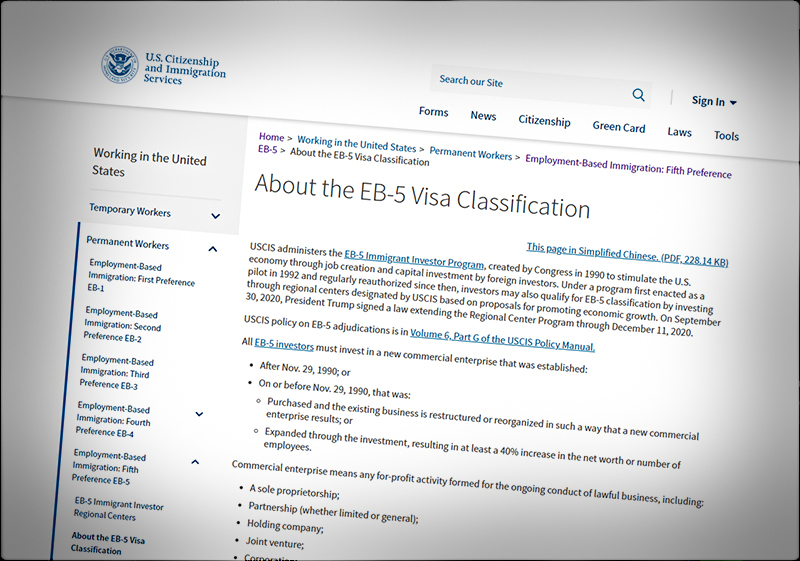
An attempt to extend and improve the controversial immigrant investor (EB-5) program, the main portion of which is due to expire on June 30, was blocked on the floor of the Senate on June 24, apparently by those who want to go back to the program’s bad old days of little or no regulation and low ($500,000) minimum investments.
Meanwhile, a new set of regulations, backed by the Obama, Trump, and Biden administrations, which raised the minimum investment to $900,000 and made other improvements in the program, were ruled invalid by a U.S. magistrate judge, as we reported earlier.
Backing the extension/reform package were two of the body’s most senior members, Sens. Chuck Grassley (R-Iowa) and Patrick Leahy (D-Vt.); blocking an attempt to pass the bill by unanimous consent was Sen. Lindsay Graham (R-S.C.).
“A narrow subset of big moneyed and corrupt interests has now shown that they would rather kill the program altogether than have to accept integrity reforms designed to clamp down on their bad behavior,” Grassley fumed on the Senate floor.
Since Congress is about to go into its July 4 recess, this means that the main part of the EB-5 program will probably expire on June 30, though it can rise from the dead again later this summer, as it has done at least once in the past. It is the role of the regional centers in pooling investments that is about to expire; the larger (and rarely used) part of the program for stand-alone, alien-run investments has permanent legislative authorization, as the pooled investments do not.
Getting back to the magistrate judge (a civil servant, not a full-fledged federal judge), that decision has caused at least one industry lawyer to predict that there will be a “frenzy” of new applications for the program, at least briefly freed from the Obama-Trump-Biden reforms. They would have to be filed by next Wednesday, June 30.
I wonder about the expected “frenzy” of applications, unless somebody has been writing them in bulk, expecting the judge’s decision. An EB-5 application needs, in addition to the alien’s signature and his or her explanation of the acquisition of the needed funds in a legitimate way, some transfers of funds, and a description of the project to be funded. Further, under the old rules — now restored — the area to be invested in (the so-called Targeted Employment Area) must be approved by a state official. Unless USCIS rolls over and accepts dummy or near-dummy applications, to be completed later, the multiple tasks required for the completion of the I-526 are too time-consuming for there to be a flood of applications.
The floor squabble on EB-5 involves the three men who have held the chair of the Senate Judiciary Committee from 2007 until this January; the current leader of the committee, Sen. Dick Durbin (D-Ill.) has, so far, not been deeply involved in EB-5 matters. Both Sen. Graham and former Majority Leader of the Senate Sen. Mitch McConnell (R-Ky.), have supported the program despite the fact that few EB-5 dollars have reached either of their states. One wonders if Majority Leader Chuck Schumer (D-N.Y.), the program’s long-standing supporter, with a nudge and a wink, encouraged Sen. Graham to make his move.
